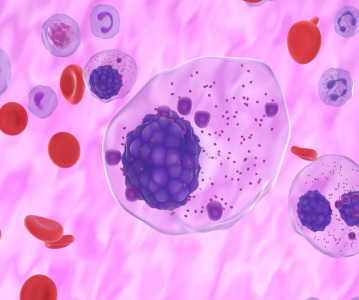Repatha regresses atherosclerosis in patients with coronary artery disease

Nearly two-thirds of patients experienced plaque regression with Repatha on top of optimized statin therapy.
Amgen has announced that adding Repatha (evolocumab) to optimized statin therapy resulted in statistically significant regression of atherosclerosis in patients with coronary artery disease (CAD). The detailed results from the GLAGOV Phase III coronary intravascular ultrasound imaging trial were presented at a Late-Breaking Clinical Trials Session of the American Heart Association (AHA) Scientific Sessions 2016 and simultaneously published in the Journal of the American Medical Association.
The GLAGOV study evaluated whether Repatha, a proprotein convertase subtilisin/kexin type 9 (PCSK9) inhibitor for the treatment of certain patients with elevated low-density lipoprotein cholesterol (LDL-C), would modify atherosclerotic plaque build-up in the coronary arteries of patients already treated with optimized statin therapy, as measured by intravascular ultrasound (IVUS) at baseline and week 78.
"The cardiovascular community began conducting imaging studies with LDL-C therapies to measure slowing of atherosclerotic disease progression. This study shows that maximal LDL-C reduction with Repatha can actually regress coronary atherosclerotic disease compared with statins alone," said Sean E. Harper, executive vice president of R&D at Amgen. "In fact, nearly two-thirds of patients on Repatha in this trial, the vast majority of whom were already on high to moderate intensity statin therapy at baseline, experienced a reduction in plaque burden."
The study met its primary objective showing that treatment with Repatha resulted in a statistically significant regression from baseline in percent atheroma volume (PAV), which is the proportion of arterial lumen occupied by plaque. Patients in the Repatha arm experienced a 0.95% decrease versus baseline in PAV compared with an increase of 0.05% versus baseline in patients receiving optimized statin therapy plus placebo. The difference between the two comparators was statistically significant. In addition, adding Repatha yielded plaque regression in PAV for a greater percentage of patients than for those receiving placebo (64.3% versus 47.3%, respectively). At baseline, 98% of patients in both arms were on high to moderate intensity statin therapy.
Patients in the Repatha arm experienced a mean decrease in normalized total atheroma volume (TAV), which is a measure of plaque volume, of 5.8mm³ compared with 0.9mm³ seen in the placebo arm. The difference between the two comparators was statistically significant. Additionally, adding Repatha yielded plaque regression in TAV for a greater percentage of patients than placebo (61.5% versus 48.9%, respectively).
"Based on previous studies, we did not know whether GLAGOV would show additional plaque regression at LDL-C levels below 60 mg/dL," said Stephen J. Nicholls, professor of Cardiology and deputy director, South Australian Health & Medical Research Institute, Adelaide, Australia. "One of the most compelling results from GLAGOV is the continued reduction of plaque at LDL-C levels well below commonly accepted thresholds."
At baseline, patients had a mean LDL-C of 92.5 mg/dL across both treatment arms. During 78 weeks of treatment, the time-weighted mean LDL-C level was 36.6 mg/dL in the Repatha arm, which represents a reduction of 59.8%, compared with 93.0 mg/dL in the placebo arm. At week 78, the mean LDL-C in the Repatha arm was 29 mg/dL, which represents a 68.0% decrease from baseline, and in the placebo arm was 90 mg/dL.
An exploratory analysis evaluated the level of plaque reduction achieved in the 144 patients with baseline LDL-C levels below 70 mg/dL (the lowest treatment target among the current global guidelines). In this analysis, these patients experienced the greatest decrease in plaque burden from baseline (change in PAV) with Repatha compared with placebo (-1.97% versus -0.35%, respectively). In addition, more than 80% of patients in this subset experienced plaque regression (by change in PAV) with Repatha (81.2% Repatha; 48.0% placebo).
Harper continued: "The compelling data from GLAGOV remove any scientific doubt about the ability of Repatha to lower LDL-C and the impact it has on the critical underlying disease process. We remain concerned that many patients are experiencing barriers to accessing Repatha, despite their physician's treatment recommendations. We look forward to our outcomes study, FOURIER, and will continue to work with payers to improve access for patients who need additional LDL-C lowering."
Related News
-
News BioNTech to begin mRNA vaccine manufacturing in Rwanda by 2025
German biotechnology company BioNTech has stated their intentions to begin production at their mRNA vaccine factory in Rwanda by 2025, which will mark the first foreign mRNA vaccine manufacturing site on the continent of Africa. -
News Identifying Alzheimer’s Disease biomarker proteins with whole blood tests
A University of Manchester spin-out pharmaceutical company, PharmaKure, has reported successful study results for the quantification of Alzheimer’s Disease biomarker proteins with a whole blood test. -
News Bill & Melinda Gates Foundation to boost mRNA vaccine initiatives in Africa with USD $40m
To address vaccine inequality and accessibility issues, the Bill & Melinda Gates Foundation aims to deliver USD $40m to various biotech companies and vaccine manufacturers in support of mRNA vaccine development. -
News CPHI Podcast Series: Exploring neurological frontiers in Alzheimer's and beyond
The next episode of the CPHI Podcast Series delves into the science and background behind some recent developments in the field of Alzheimer's disease and neurological disorders. -
News Is patient centricity the future of pharmaceutical manufacturing?
In this interview with Sandra Sánchez y Oldenhage, President of PharmAdvice, she speaks to the importance of considering patients in the manufacturing stages of the pharmaceutical supply chain, and how it can redefine healthcare. -
News CPHI Podcast Series: How to leverage AI for Drug Discovery
Artificial intelligence is the topic of debate in the latest episode from the CPHI Podcast Series, where Digital Editor Lucy Chard speaks with Bill Whitford of DPS Group about the integration of AI in healthcare. -
News Pfizer forges ahead with blood cancer therapy after approval from FDA
Pfizer gains accelerated approval from the US FDA for their new bispecific antibody therapy for multiple myeloma, set to address an unmet need for patients. -
News Alzheimer's drug donanemab deemed effective in landmark clinical trial
Results from the TRAILBLAZER-ALZ 2 Randomised Clinical Trial into the use of donanemab to treat early symptoms of Alzheimer’s disease have been analysed.
Position your company at the heart of the global Pharma industry with a CPHI Online membership
-
Your products and solutions visible to thousands of visitors within the largest Pharma marketplace
-
Generate high-quality, engaged leads for your business, all year round
-
Promote your business as the industry’s thought-leader by hosting your reports, brochures and videos within your profile
-
Your company’s profile boosted at all participating CPHI events
-
An easy-to-use platform with a detailed dashboard showing your leads and performance







